What is a basophil?
- Basophils are the least abundant white blood cells, making up <1% of circulating leukocytes.
- They are part of the granulocyte family, alongside neutrophils and eosinophils.
- Basophils are produced in the bone marrow and circulate in the blood.
- They play a role in immune responses, particularly in:
- Allergic reactions (via histamine release)
- Parasitic infections
- Chronic inflammatory conditions
- Major functions:
- Release histamine (causing vasodilation and inflammation)
- Release heparin (prevents blood clotting)
- Participate in allergic responses and defense against parasites
- Secrete cytokines to recruit other immune cells
- Involved in tissue repair and inflammation
Key features:
- Large cytoplasmic granules that stain dark blue or purple with basic dyes.
- Contain histamine, heparin, leukotrienes, and other mediators.
- Surface receptors for IgE (like mast cells).
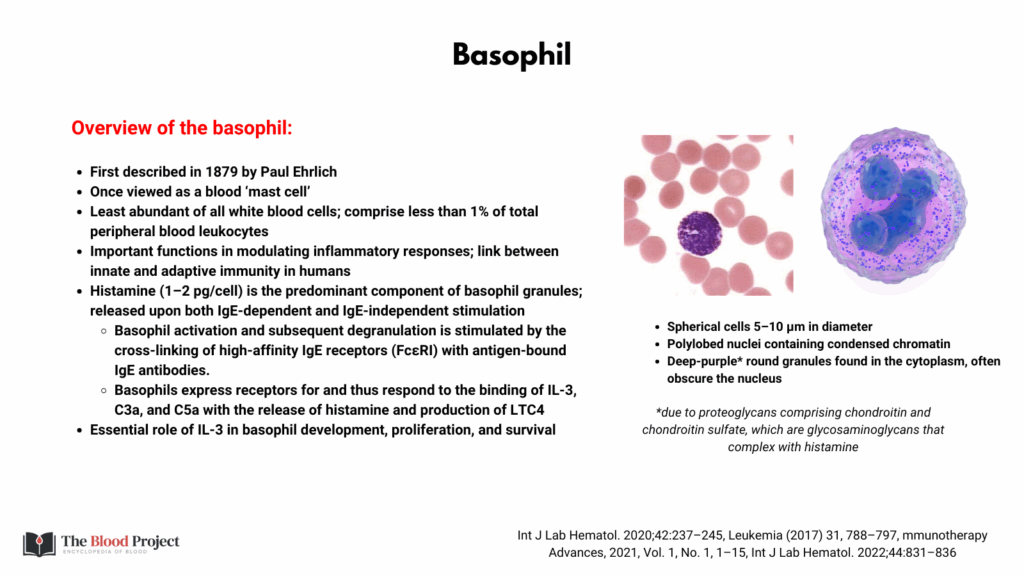
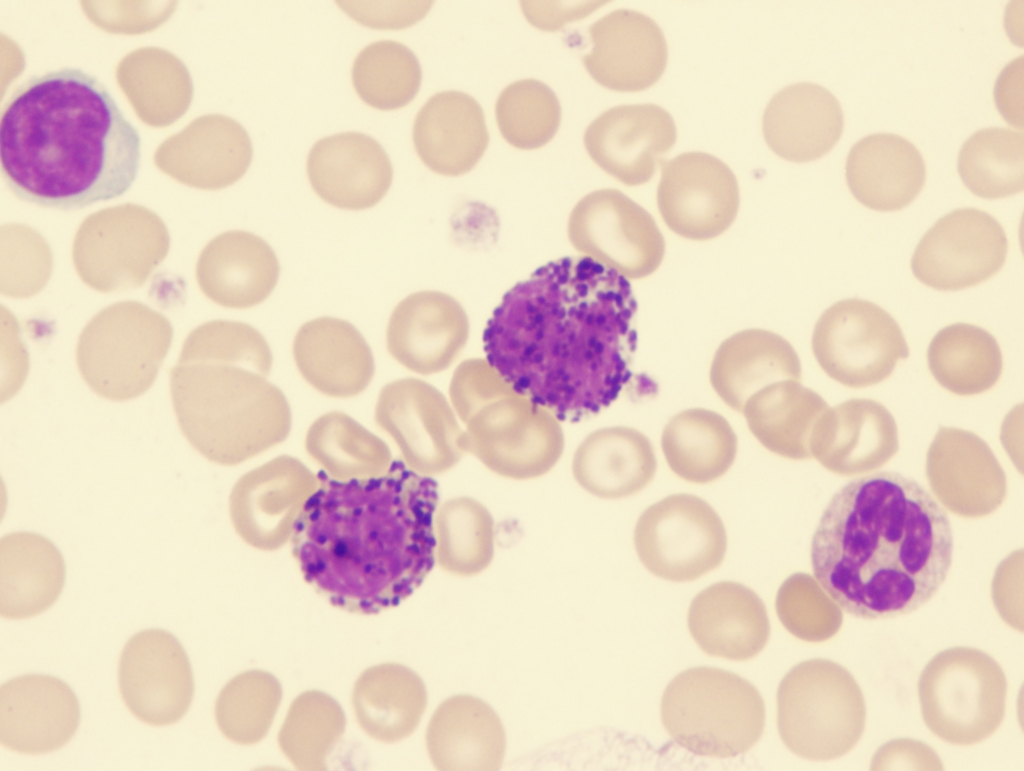
Peripheral smear showing basophils, from Shutterstock with permission.

Schematic of a basophil, from Shutterstock with permission.
What is basophilia?
- Basophilia refers to an elevated absolute basophil count, typically >0.1 × 10⁹/L in adults (may vary slightly by lab).
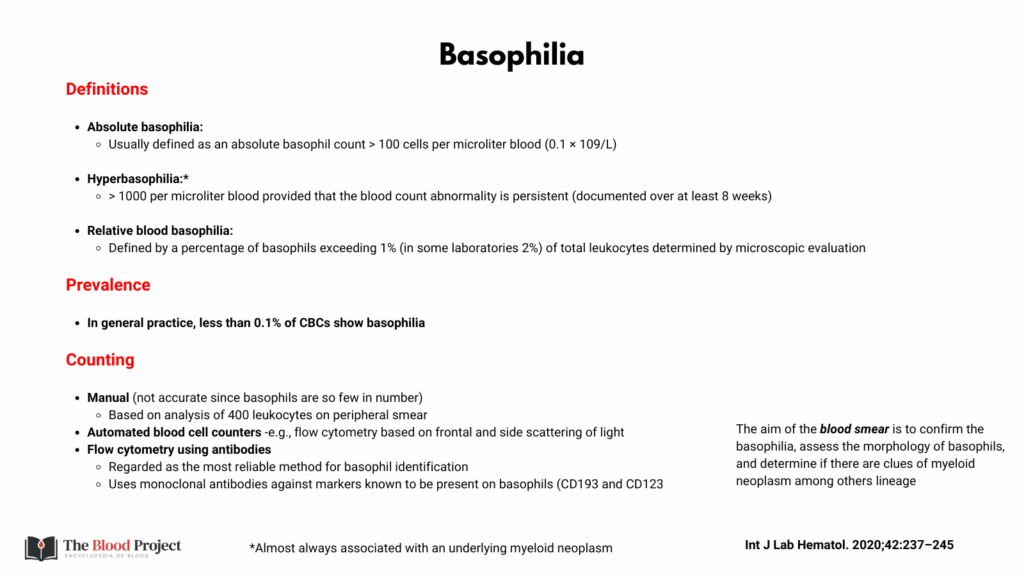
Causes of basophilia
- Clonal/myeloproliferative disorders:
- Chronic myeloid leukemia (CML) – most common and important cause1
- Polycythemia vera
- Primary myelofibrosis
- Essential thrombocythemia
- Reactive/non-clonal causes:
- Allergic reactions (e.g., food allergy, urticaria, anaphylaxis)
- Chronic inflammation (e.g., rheumatoid arthritis, ulcerative colitis)
- Infections (especially viral or parasitic)
- Endocrinopathies (e.g., hypothyroidism)
- Post-splenectomy (transient)
- Iron deficiency
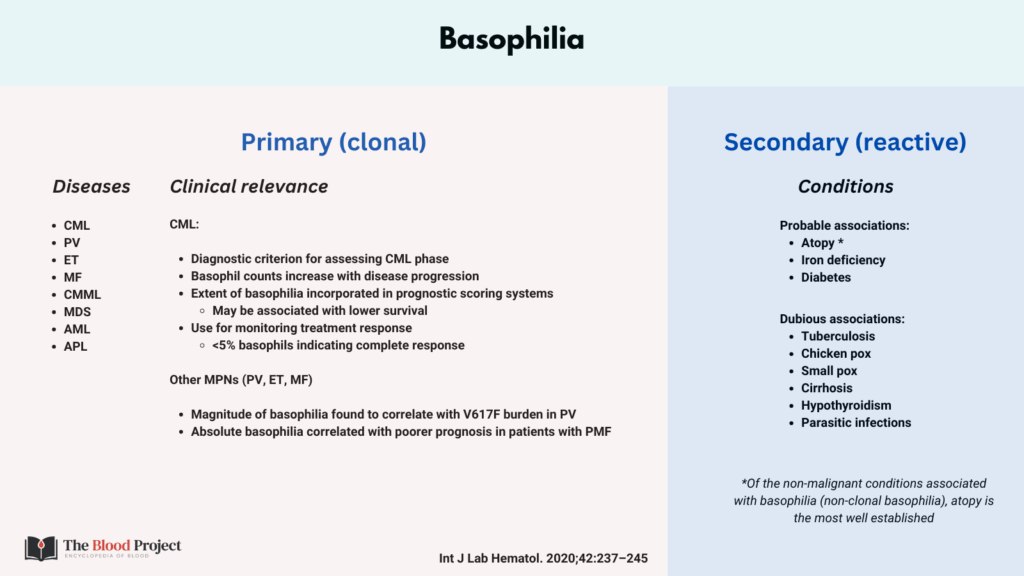
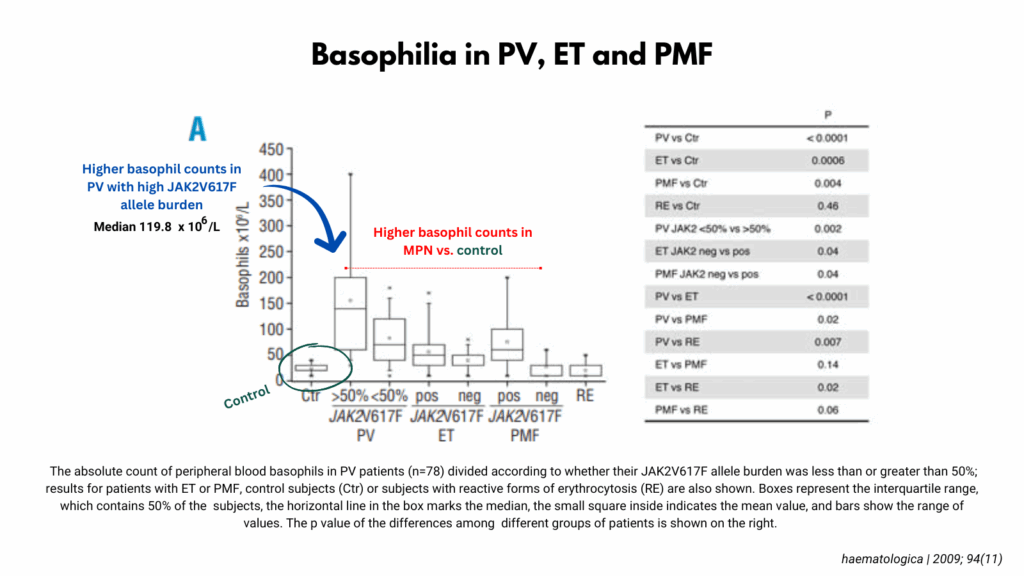
Clinical implications
- Basophilia itself does not cause symptoms—symptoms, if present, relate to the underlying condition (e.g., symptoms of allergies, chronic inflammation, or blood cancers).
- Isolated mild basophilia is often nonspecific.
- Persistent or marked basophilia should raise suspicion for a myeloproliferative neoplasm, especially CML, and warrants further evaluation (e.g., CBC with differential, peripheral smear, BCR-ABL testing).
References:
- How I investigate basophilia in daily practice. Int J Lab Hematol. 2020 Jun;42(3):237-245.
- Basophils in peripheral blood and bone marrow. A retrospective review. Am J Med 1984 Mar;76(3):509-11.

